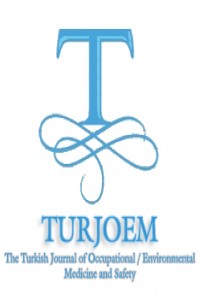Öz
Arsenic is a
metalloid found in water, air, and soil from both natural and anthropogenic
sources and exists in organic as well as inorganic forms. Arsenic toxicity is
being a global health issue influenc-ing millions of people, except from
causing cardiovascular, gastrointestinal, genitourinary, respirato-ry,
endocrine, hematopoietic system and skin diseases, neurologic consequences in
adults is also associated with acute and chronic arsenic exposure. The
hematopoietic system, which is one of the largest organs in the body, is
consist of all blood-forming tissues and circulating blood cells. The major
function of the hematopoietic system is hematopoiesis, the repeated production
of highly spe-cialized mature circulating blood cells responsible for immune
(leukocytes), respiratory (hemoglobin in erythrocytes), and hemostatic
(thrombocytes/platelets) processes. This system is known to be re-markably
vulnerable to change by different drugs and other environmental chemicals,
especially trace metals, and it is altogether appropriate, thus, it is regarded
as a potential target system for ar-senic compounds in animals which are
chronically exposed to these agents. Arsenic exposure influ-ences hematopoietic
system including erythrocytes, bone marrow and spleen. Chronic arsenic
expo-sure via medication, drinking water or in occupational settings has been
associated to hematopoietic changes, such as erythropoiesis, severe granulocytopenia,
and infrequently megaloblastic changes, and liver damage. Millions of
populations throughout the world continue to be chronically exposed to As by
contaminated water and diet, therefore, the necessity for further effort to
examine in utero and early life exposure to As is important and essential to
defining the potential long-term health consequences of this ubiquitous
toxicant.
Anahtar Kelimeler
Kaynakça
- Zeliha KAYAALTI, Gulibahaer REJIEPU
- Institute of Forensic Sciences, Ankara University, Ankara, Turkey
Öz
Kaynakça
- Zeliha KAYAALTI, Gulibahaer REJIEPU
- Institute of Forensic Sciences, Ankara University, Ankara, Turkey
Ayrıntılar
| Bölüm | Articles |
|---|---|
| Yazarlar | |
| Yayımlanma Tarihi | 16 Şubat 2017 |
| Yayımlandığı Sayı | Yıl 2017 Cilt: Volume 2 Sayı: İssue 1 (1) - 2.İnternational Congress Of Forensic Toxicology |


